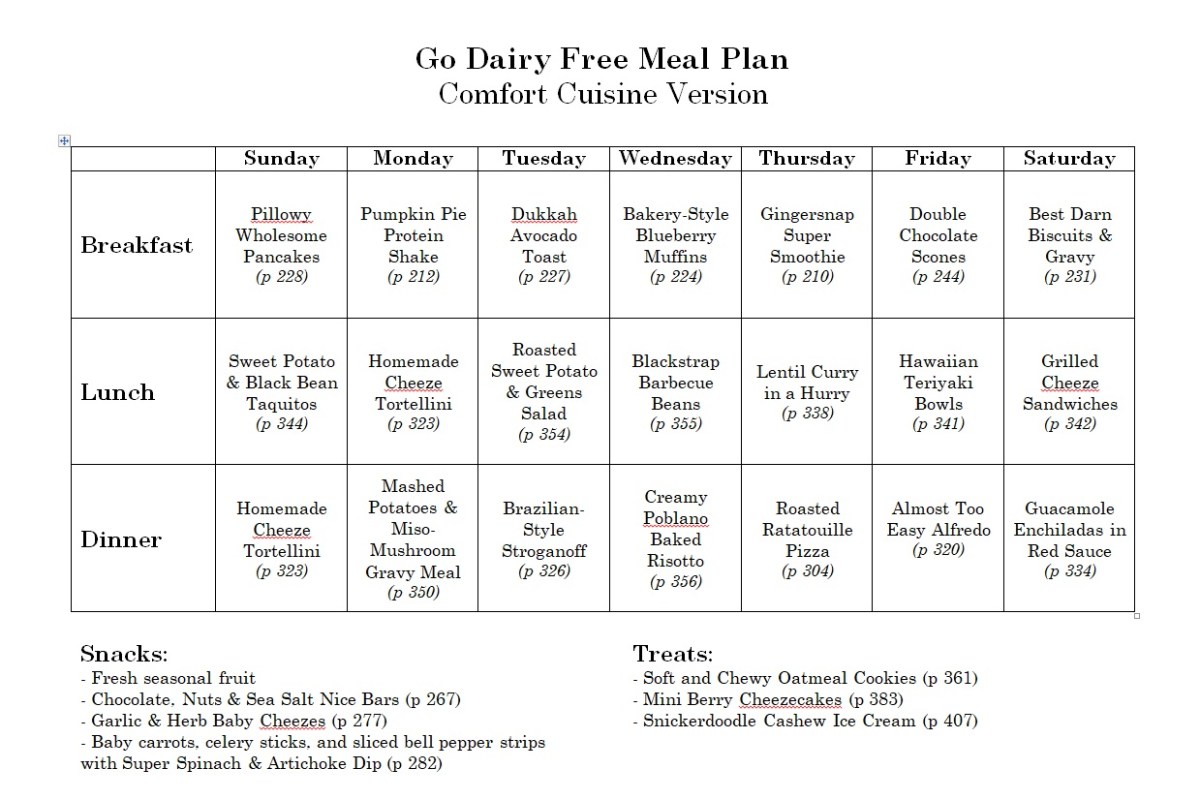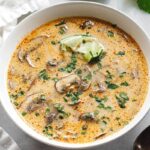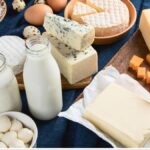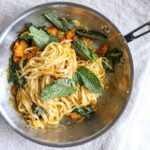Embark on a culinary journey free from dairy restrictions! This comprehensive guide unveils a world of delicious and nutritious dairy-free recipes, meticulously crafted for every meal of the day. From vibrant breakfast bowls bursting with flavor to decadent dairy-free desserts that will tantalize your taste buds, we’ll navigate the art of dairy-free cooking with ease and creativity. Prepare to discover a wealth of substitutions, techniques, and meal planning strategies that will transform your approach to healthy eating, all while ensuring every bite is a delightful experience.
We’ll explore a diverse range of recipes, categorized by meal type, offering detailed ingredient lists, step-by-step instructions, and nutritional information. Learn to master dairy-free cooking techniques, understand the nutritional benefits of each dish, and effortlessly create a balanced weekly meal plan that caters to your specific dietary needs and preferences. This isn’t just about eliminating dairy; it’s about unlocking a world of flavorful possibilities.
Dairy-Free Breakfast Ideas

Embarking on a dairy-free journey doesn’t mean sacrificing delicious and nutritious breakfasts. These recipes offer a vibrant array of flavors and textures, ensuring a satisfying start to any day, all while being completely free of dairy products. Each recipe is designed for ease of preparation, using readily available ingredients.
Dairy-Free Breakfast Recipes
Dairy-free breakfasts offer a wide spectrum of choices, catering to various tastes and dietary needs. The following table presents five diverse recipes, highlighting their ingredients, preparation steps, and approximate preparation times.
| Recipe Name | Ingredients | Instructions | Preparation Time |
|---|---|---|---|
| Tropical Mango Smoothie | 1 cup frozen mango chunks, 1/2 cup coconut milk (full-fat), 1/4 cup orange juice, 1 tablespoon chia seeds, 1/2 teaspoon lime juice | Combine all ingredients in a blender and blend until smooth. Adjust consistency with more liquid if needed. | 5 minutes |
| Savory Oatmeal with Mushrooms and Spinach | 1/2 cup rolled oats, 1 cup vegetable broth, 1/2 cup chopped mushrooms, 1 cup spinach, 1 tablespoon nutritional yeast, salt and pepper to taste | Cook oats in vegetable broth according to package directions. Stir in mushrooms and spinach during the last few minutes of cooking. Season with nutritional yeast, salt, and pepper. | 15 minutes |
| Coconut Yogurt with Berries and Granola | 1 cup dairy-free coconut yogurt (plain or vanilla), 1/2 cup mixed berries, 1/4 cup dairy-free granola | Layer coconut yogurt, berries, and granola in a bowl or glass. Enjoy immediately or chill for a later breakfast. | 5 minutes |
| Tofu Scramble with Vegetables | 1 block (14 oz) firm or extra-firm tofu, crumbled; 1/2 onion, chopped; 1 bell pepper, chopped; 1 cup chopped vegetables (e.g., mushrooms, spinach, zucchini); 1 tablespoon nutritional yeast; turmeric, garlic powder, onion powder, salt, and pepper to taste. | Sauté onion and bell pepper until softened. Add crumbled tofu and cook until lightly browned. Stir in remaining vegetables and seasonings. Cook until heated through. | 15 minutes |
| Banana Pancakes | 1 ripe banana, mashed; 1 egg; 1/4 cup oat flour; 1/4 teaspoon baking powder; pinch of salt; optional: cinnamon, maple syrup | Mash banana. Whisk together egg, mashed banana, oat flour, baking powder, and salt. Cook pancakes on a lightly oiled griddle over medium heat until golden brown on both sides. Serve with maple syrup (optional). | 15 minutes |
Nutritional Benefits Infographic
The infographic would be designed as a visually appealing chart, with each breakfast recipe represented by a distinct section. Each section would feature a vibrant background color, unique iconography representing the recipe (e.g., a blender for the smoothie, a bowl of oatmeal for the savory oatmeal), and clear, concise text. The layout would prioritize readability and visual appeal.
The top of the infographic would include a title: “Dairy-Free Breakfast Powerhouses: Fueling Your Day the Healthy Way.” Each recipe’s section would highlight key nutritional benefits. For example, the Tropical Mango Smoothie section would showcase its high Vitamin C content from mango and orange juice, the fiber from chia seeds, and the healthy fats from coconut milk. The Savory Oatmeal section would emphasize its high fiber content, iron from spinach, and protein from oats. The Coconut Yogurt section would highlight probiotics for gut health and the antioxidants in berries. The Tofu Scramble section would showcase the protein from tofu and the vitamins and minerals from the vegetables. Finally, the Banana Pancakes section would highlight the potassium from bananas and fiber from oat flour. The infographic would use a combination of text and visually appealing icons to represent each nutritional benefit.
Recipe Versatility and Substitutions
Each recipe offers considerable flexibility to accommodate various dietary needs and preferences. The Tropical Mango Smoothie can be customized with different fruits, like berries or pineapple. The Savory Oatmeal can incorporate various vegetables and spices. Different types of dairy-free yogurt or milk can be used in the Coconut Yogurt recipe. The Tofu Scramble can be adjusted with different vegetables and spices for diverse flavor profiles. The Banana Pancakes can be made with other fruits like applesauce or pumpkin puree, or different flours such as almond flour or coconut flour. These substitutions allow for creative exploration while maintaining the core nutritional value of each recipe.
Creating a Weekly Dairy-Free Meal Plan
Transitioning to a dairy-free diet can feel overwhelming, but with a well-structured plan, it becomes manageable and enjoyable. This section provides a sample weekly dairy-free meal plan, incorporating considerations for macronutrient balance and practical tips for simplifying the process. Remember to adjust portion sizes to meet your individual caloric needs and activity levels.
A Sample Weekly Dairy-Free Meal Plan
A well-balanced dairy-free diet requires careful consideration of macronutrients. This sample plan offers a variety of foods to ensure sufficient protein, carbohydrates, and healthy fats. Remember that this is just a sample, and you should adjust it based on your preferences and dietary needs.
- Monday:
- Breakfast: Oatmeal with berries and chopped nuts.
- Lunch: Large salad with quinoa, roasted vegetables (such as bell peppers and zucchini), and a lemon-tahini dressing.
- Dinner: Lentil soup with a side of dairy-free bread.
- Snacks: Apple slices with almond butter, a handful of almonds.
- Tuesday:
- Breakfast: Dairy-free yogurt with granola and fruit.
- Lunch: Leftover lentil soup.
- Dinner: Stir-fry with tofu, brown rice, and a variety of colorful vegetables.
- Snacks: Carrot sticks with hummus, a small orange.
- Wednesday:
- Breakfast: Smoothie made with dairy-free milk, spinach, banana, and protein powder.
- Lunch: Chickpea salad sandwich on dairy-free bread.
- Dinner: Baked sweet potato with black beans and salsa.
- Snacks: Rice cakes with avocado, a handful of sunflower seeds.
- Thursday:
- Breakfast: Dairy-free pancakes with maple syrup and berries.
- Lunch: Leftover baked sweet potato and black beans.
- Dinner: Vegetable curry with brown rice.
- Snacks: Edamame, a pear.
- Friday:
- Breakfast: Chia seed pudding with coconut milk and fruit.
- Lunch: Salad with grilled chicken or tofu, mixed greens, and a vinaigrette dressing.
- Dinner: Pizza with dairy-free cheese and your favorite toppings on a whole-wheat crust.
- Snacks: Trail mix (nuts, seeds, dried fruit), a banana.
- Saturday:
- Breakfast: Breakfast burrito with scrambled tofu, black beans, and salsa in a whole-wheat tortilla.
- Lunch: Leftover pizza.
- Dinner: Pasta with marinara sauce and vegetables (dairy-free pasta and sauce are readily available).
- Snacks: Popcorn (air-popped), grapes.
- Sunday:
- Breakfast: Waffles made with dairy-free milk and topped with fruit.
- Lunch: Leftover pasta.
- Dinner: Roasted chicken or tofu with roasted vegetables.
- Snacks: Dairy-free yogurt with berries, a small bowl of berries.
Macronutrient Balance in a Dairy-Free Diet
Balancing macronutrients—protein, carbohydrates, and fats—is crucial for a healthy dairy-free diet. Sufficient protein supports muscle growth and repair, carbohydrates provide energy, and healthy fats contribute to overall well-being and satiety. This sample plan aims for a balance, but individual needs vary. Consider consulting a registered dietitian or nutritionist for personalized guidance. A visual representation would show a pie chart with segments for protein, carbohydrates, and fats, each labeled with a percentage range indicating a healthy balance (e.g., 20-30% protein, 45-65% carbohydrates, 20-35% fats).
Meal Prepping and Grocery Shopping Strategies
Efficient meal prepping and strategic grocery shopping are key to simplifying a dairy-free diet. Preparing components like roasted vegetables, grains, and legumes in advance saves significant time during the week. Create a detailed shopping list based on your meal plan, prioritizing whole, unprocessed foods. Consider buying in bulk for items like grains and nuts, and store them properly to maintain freshness. A well-organized pantry and refrigerator, with clearly labeled containers, helps manage food and reduces food waste. A mental image would be a brightly lit kitchen with neatly organized shelves, labeled containers filled with pre-portioned ingredients, and a refrigerator stocked with fresh produce and other essentials.
Dairy-Free Cooking Techniques and Substitutions
Embarking on a dairy-free culinary journey presents unique challenges, but with the right techniques and substitutions, delicious and satisfying meals are easily within reach. Understanding the role dairy plays in various recipes – from providing richness and creaminess to acting as a binding agent – is the first step to successful dairy-free cooking. This section will equip you with the knowledge and strategies to navigate these challenges confidently.
Common Dairy-Free Cooking Challenges and Solutions
Many dairy-free cooks initially struggle with replicating the texture and flavor of dairy-containing recipes. Achieving a creamy texture without cream, for instance, requires understanding the properties of alternative ingredients. Similarly, the binding properties of dairy in baked goods need to be replaced effectively.
Challenge: Achieving Creaminess
Solution: Utilize creamy alternatives such as full-fat coconut milk (for richer sauces and curries), cashew cream (made by soaking cashews and blending them with water until smooth), or silken tofu (pureed for a neutral-flavored creaminess). Remember that the fat content of your chosen substitute will significantly impact the final texture and richness.
Challenge: Binding Ingredients in Baking
Solution: Dairy-free baking often requires adjustments to binding agents. Flax eggs (ground flaxseed meal mixed with water), chia eggs (similar to flax eggs), applesauce, or mashed bananas can effectively replace eggs in many recipes. For added structure, consider using more binding starches like tapioca starch or arrowroot powder.
Challenge: Replicating Dairy’s Flavor Profile
Solution: Nutritional yeast adds a cheesy, nutty flavor to many dishes, while dairy-free butter and cream cheeses offer familiar tastes. Experimenting with herbs, spices, and acidic ingredients like lemon juice can also enhance the overall flavor profile and compensate for the absence of dairy’s inherent tang.
Dairy Products and Their Dairy-Free Substitutes
The following table provides a comprehensive list of common dairy products and their suitable dairy-free alternatives, highlighting their functionalities and flavor profiles. Choosing the right substitute depends heavily on the specific recipe and desired outcome.
| Dairy Product | Dairy-Free Substitute |
|---|---|
| Milk (whole, 2%, skim) | Almond milk, soy milk, oat milk, coconut milk, cashew milk (each with varying fat content and flavor profiles) |
| Butter | Dairy-free butter (often made from coconut oil or other plant-based oils), olive oil, avocado oil |
| Cream Cheese | Cashew cream cheese, tofu-based cream cheese, various commercially available vegan cream cheeses |
| Yogurt | Coconut yogurt, soy yogurt, almond yogurt, cashew yogurt |
| Cheese (cheddar, mozzarella, etc.) | Nutritional yeast (for cheesy flavor), various commercially available vegan cheeses (made from nuts, tofu, or other plant-based ingredients) |
Creating a Dairy-Free Creamy Sauce
This step-by-step guide demonstrates how to make a versatile dairy-free creamy sauce using cashew cream, showcasing a simple yet effective technique. This sauce can be adapted to suit various cuisines and dishes.
- Soak Cashews: Place 1 cup of raw cashews in a bowl and cover with boiling water. Let them soak for at least 30 minutes, or up to several hours for a smoother texture. This step softens the cashews, making them easier to blend into a creamy consistency.
- Blend Cashews: Drain the soaked cashews and add them to a high-speed blender along with 1/2 cup of water. Blend until completely smooth and creamy. Adjust the water as needed to achieve your desired consistency. A thicker sauce requires less water.
- Add Flavor: Add your desired flavorings. For a basic sauce, start with 2 tablespoons of nutritional yeast for a cheesy note, 1 tablespoon of lemon juice for brightness, salt, and pepper to taste. Other options include garlic powder, onion powder, herbs, or spices.
- Simmer (Optional): For a richer, more cohesive sauce, gently simmer the cashew cream in a saucepan over low heat for 5-10 minutes, stirring occasionally. This step helps to further develop the flavors and create a creamier texture. Be careful not to boil the sauce.
- Adjust and Serve: Taste and adjust seasonings as needed. The sauce is now ready to be used as a topping for pasta, vegetables, or as a base for other dishes. It can be stored in the refrigerator for up to 3 days.
This journey through dairy-free cuisine concludes with a newfound appreciation for the versatility and deliciousness of dairy-free eating. You’ve armed yourself with the knowledge and recipes to create satisfying and nutritious meals throughout the entire day, from sunrise to sunset. Remember the ease of substitutions, the power of meal prepping, and the joy of experimenting with diverse flavors. Embrace this newfound freedom in the kitchen, and savor every dairy-free delight!
Question Bank
What are the best dairy-free milk alternatives?
Popular choices include almond milk, soy milk, oat milk, and coconut milk. The best option depends on individual taste preferences and dietary needs.
Can I freeze dairy-free meals?
Many dairy-free meals freeze well. Consider individual portion sizes for easy reheating. Always allow meals to cool completely before freezing.
How do I adapt existing recipes to be dairy-free?
Replace dairy products like milk and cream with dairy-free alternatives. Experiment with plant-based yogurts, cheeses, and butter substitutes to achieve similar textures and flavors.
Are dairy-free diets suitable for everyone?
While generally healthy, individual needs vary. Consult a doctor or registered dietitian before making significant dietary changes, especially if you have allergies or underlying health conditions.


